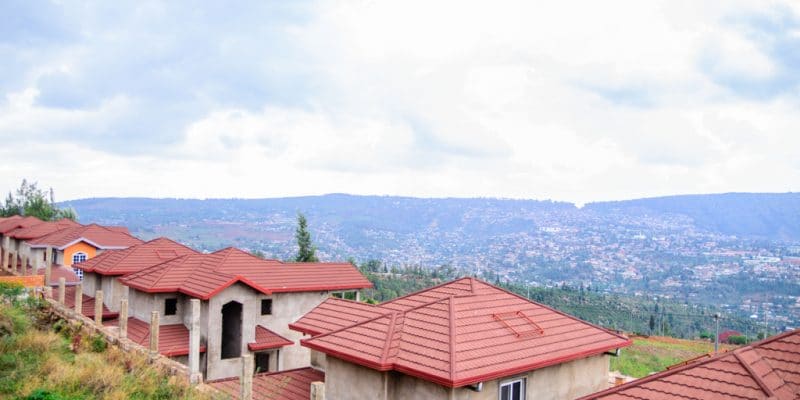Within the framework of the Million Cool Roofs Challenge 2021, the Rwandan government has launched a project called "Rwanda Cooling Project". It aims to deploy 1 million square metres of cooling roofs in the country by September 2020. The project will require 94.36 million Rwandan francs, or USD 100,000.
Rwanda is one of 10 countries competing in the 2021 Million Cool Roofs Challenge. It is a global competition aimed at accelerating access to sustainable and affordable cooling through the rapid deployment of refrigerated roofing materials for residential, municipal and commercial buildings. The winning country will receive close to 940 million Rwandan francs ($1 million).
Rwanda plans to use these winning funds to promote green building technologies. In order to get ahead of the other countries involved (Kenya, South Africa, Niger, Senegal, and Côte d’Ivoire, Mexico, Bangladesh, Indonesia and the Philippines), Rwanda launched a one-year project in 2019 called “Rwanda Cooling Project”. The initiative aims to deploy 1 million cubic metres of cooling roofs in the country by September 2020. Cooling roofs will reduce heat inside buildings.
The Rwanda Cooling Project costs 94.36 million Rwandan francs, or $100,000 to the government. “If Rwanda wins the award in early 2021, part of that money will be used to support the soon-to-be-created National Centre of Excellence for Green Urbanization to promote green building technologies,” says Haruna Nshimiyimana, director of the housing regulations and standards division at the Rwanda Housing Authority (RHA). The “Million Cool Roofs Challenge” is an initiative of the Kigali Cooling Efficiency Programme and other programmes, launched on January 1, 2019.
Green Urbanisation in Rwanda
The National Centre of Excellence for Green Urbanization is one of the expected flagship projects of the EDPRS2 (The Second Economic Development and Poverty) strategy put in place by the Rwandan government as part of its vision for the year 2020. It will increase the level of green investment and green urban development that exploits green economic opportunities, green innovation in the industrial and private sector. “Through this centre, local manufacturers will adopt a new business model and produce locally sun-reflective paints for schools, hospitals, commercial buildings, houses, buses and others,” says Yves Sangwa, the coordinator of the Green Urbanization Project.
“The sun-reflective paints will help address global warming by reducing the heat stress produced by the sun in buildings without necessarily using air-conditioning units,” he adds.
The green urbanisation project was implemented through the joint efforts of the Rwandan Green Building Organization (RWGBO) of the Ministry of Environment and the Rwanda Housing Authority.
Inès Magoum






